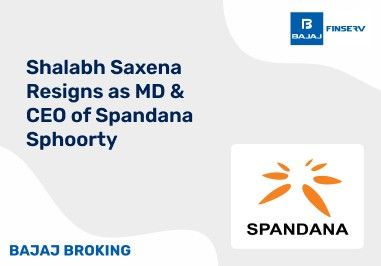BAJAJ BROKING
Tankup Engineers IPO is Open!
Open a Free Demat Account
Trade Now, Pay Later with up to 4x
Track Market Movers Instantly
Bond Investment Strategies
A bond is a financial instrument that offers a steady source of income in the form of interest payments on your invested capital. Companies and governments often resort to issuing bonds to gain access to funds. These funds are then used for business activities and development projects. Since a bond is a debt instrument, the issuing entity is required to pay interest to the investors and is obligated to return the principal once its tenure ends. Compared to other market-linked instruments like equity, bonds carry lower risk and are less volatile. This often leads investors to think that investing in bonds is easier compared to other investment options. However, that’s far from reality. In fact, to succeed in bond investing, it is important to use strategic bond portfolio management strategies. If you’re interested in investing in bonds, here are a few bond investment strategies you can consider using.
Also read: Risks Associated with Government Bonds
Bond Portfolio Management Strategies
Bond investment strategies are often categorised into passive and active strategies. Let’s take a closer look at some of the most common techniques under each of these two categories.
Passive Bond Investment Strategies
Passive strategies are one of the easiest to execute. One of the many advantages of these kinds of strategies is that they require little to no monitoring. All you need to do is choose the right bond, purchase it and hold it to maturity.
Since bonds are predictable, you get to know the exact returns you’re likely to get from them beforehand. Due to their buy-and-hold approach, passive bond investment strategies are often very cost-effective.
Ladder
Many bond investors purchase multiple bonds in a bid to increase their income. However, they tend to purchase bonds that have maturities very near to one another. This increases liquidity risk, seeing as you cannot get access to funds during emergencies unless you liquidate your bond holdings prematurely.
Here’s where laddering can help. The ladder strategy is one of the most popular passive strategies as far as bonds are concerned. It involves purchasing multiple bonds with increasing tenures, which staggers the maturities.
A major advantage of laddering is that it solves the liquidity problem by ensuring the bonds mature at regular intervals. This provides a steady cash flow and reduces the chances of getting stuck with a large investment capital during non-optimal market conditions.
Here’s a short example of how laddering works. Assume you purchase 5 bonds of 4, 5, 6, 7 and 8-year tenures. A bond matures every year from the end of the 4th year of investment, giving you access to the principal investment amount. This kind of arrangement solves the liquidity crisis you often end up with when you invest in bonds with the same maturities. Also, as each bond matures, you can continue to reinvest the principal amount as long as the interest rates in the bond market are favourable.
Active Bond Investment Strategies
Active bond investment strategies are the exact opposite of passive strategies. The primary aim of these techniques is to maximise the returns from bonds. However, these strategies don’t eliminate risk, which makes them more suitable for investors with moderate and high risk tolerances.
One of the major features of active bond portfolio management strategies is that they need to be actively monitored, tracked and analysed. To do this, investors need a thorough understanding of the bond market dynamics. This makes these strategies slightly more complicated to execute.
Also Read: The Best Bonds to Invest In
Bullet
A bullet strategy involves purchasing multiple bonds with the same maturities. However, the purchase dates are staggered to minimise interest rate risk. Executing a bond bullet strategy may be ideal if you want all the funds to be accessible at a certain point in the future.
For instance, let’s say that you want to be able to access your funds 10 years from now. You consider purchasing six 10-year bonds over a 3-year period, with every bond purchase being made at a 6-month interval.
If the interest rates rise or fall during this 3-year period, the price of the 10-year bond will also change. Now, when you continue to purchase the bond at the specified intervals for 3 years, you effectively average out the price of the bond, thereby reducing the impact that fluctuating interest rates have on your bond portfolio.
Barbell
A barbell strategy involves purchasing an equal number of long-term and short-term bonds. Long-term bonds provide attractive interest rates, whereas short-term bonds provide liquidity. The barbell strategy enables you to enjoy the best of both offerings.
Once the short-term bonds mature, you can use the principal investment amount to purchase more short-term bonds if the interest rates have risen or haven’t undergone any change. You can continue to do this until the long-term bonds mature.
However, if you find that the interest rates have fallen by the time the short-term bonds mature, you can choose to hold the principal investment amount until the rates rise back up again.
Also Read: How to Choose Bonds?
Conclusion
The list of bond portfolio management strategies outlined above is only meant to be illustrative and is far from being exhaustive. There are several other strategies that bond investors routinely use in addition to the ones mentioned here.
That said, the use of the appropriate bond investment strategy is only one piece of the puzzle. Tracking and monitoring the strategy closely to ensure that it works as intended is the other piece.
Keeping a close watch on the performance of your strategy can help you determine whether or not it is producing the results you intended. If at any point you find the performance of your strategy unsatisfactory, take corrective action immediately. This will not only help you protect your investments but also ensure that they continue to generate steady returns.
Share this article:
Read More Blogs
Disclaimer :
The information on this website is provided on "AS IS" basis. Bajaj Broking (BFSL) does not warrant the accuracy of the information given herein, either expressly or impliedly, for any particular purpose and expressly disclaims any warranties of merchantability or suitability for any particular purpose. While BFSL strives to ensure accuracy, it does not guarantee the completeness, reliability, or timeliness of the information. Users are advised to independently verify details and stay updated with any changes.
The information provided on this website is for general informational purposes only and is subject to change without prior notice. BFSL shall not be responsible for any consequences arising from reliance on the information provided herein and shall not be held responsible for all or any actions that may subsequently result in any loss, damage and or liability. Interest rates, fees, and charges etc., are revised from time to time, for the latest details please refer to our Pricing page.
Neither the information, nor any opinion contained in this website constitutes a solicitation or offer by BFSL or its affiliates to buy or sell any securities, futures, options or other financial instruments or provide any investment advice or service.
BFSL is acting as distributor for non-broking products/ services such as IPO, Mutual Fund, Insurance, PMS, and NPS. These are not Exchange Traded Products. For more details on risk factors, terms and conditions please read the sales brochure carefully before investing.
Investments in the securities market are subject to market risk, read all related documents carefully before investing. This content is for educational purposes only. Securities quoted are exemplary and not recommendatory.
For more disclaimer, check here : https://www.bajajbroking.in/disclaimer
Our Secure Trading Platforms
Level up your stock market experience: Download the Bajaj Broking App for effortless investing and trading













